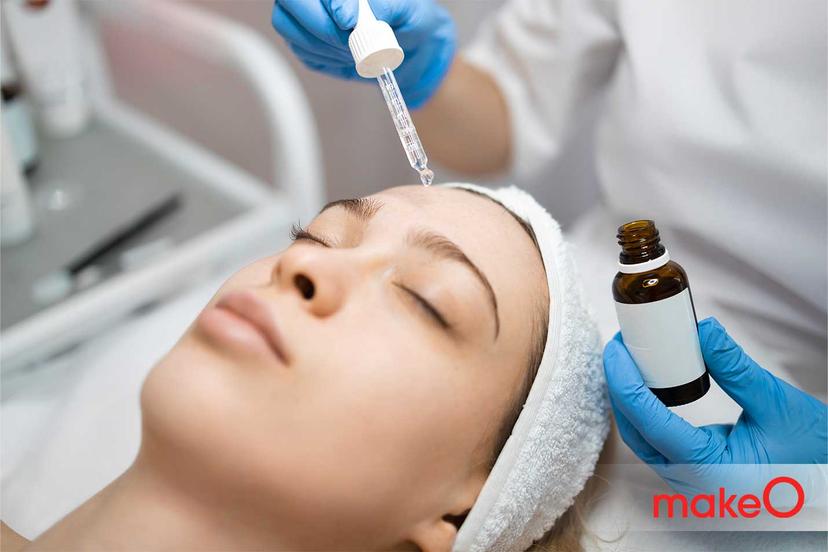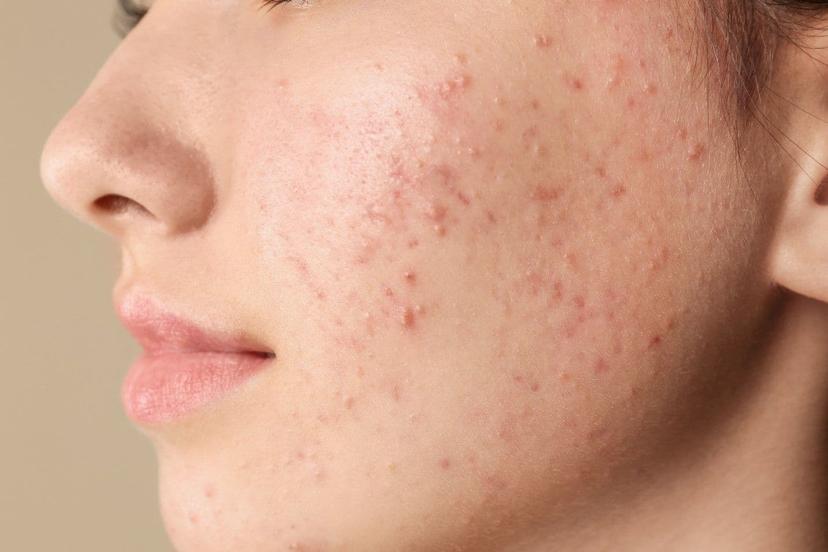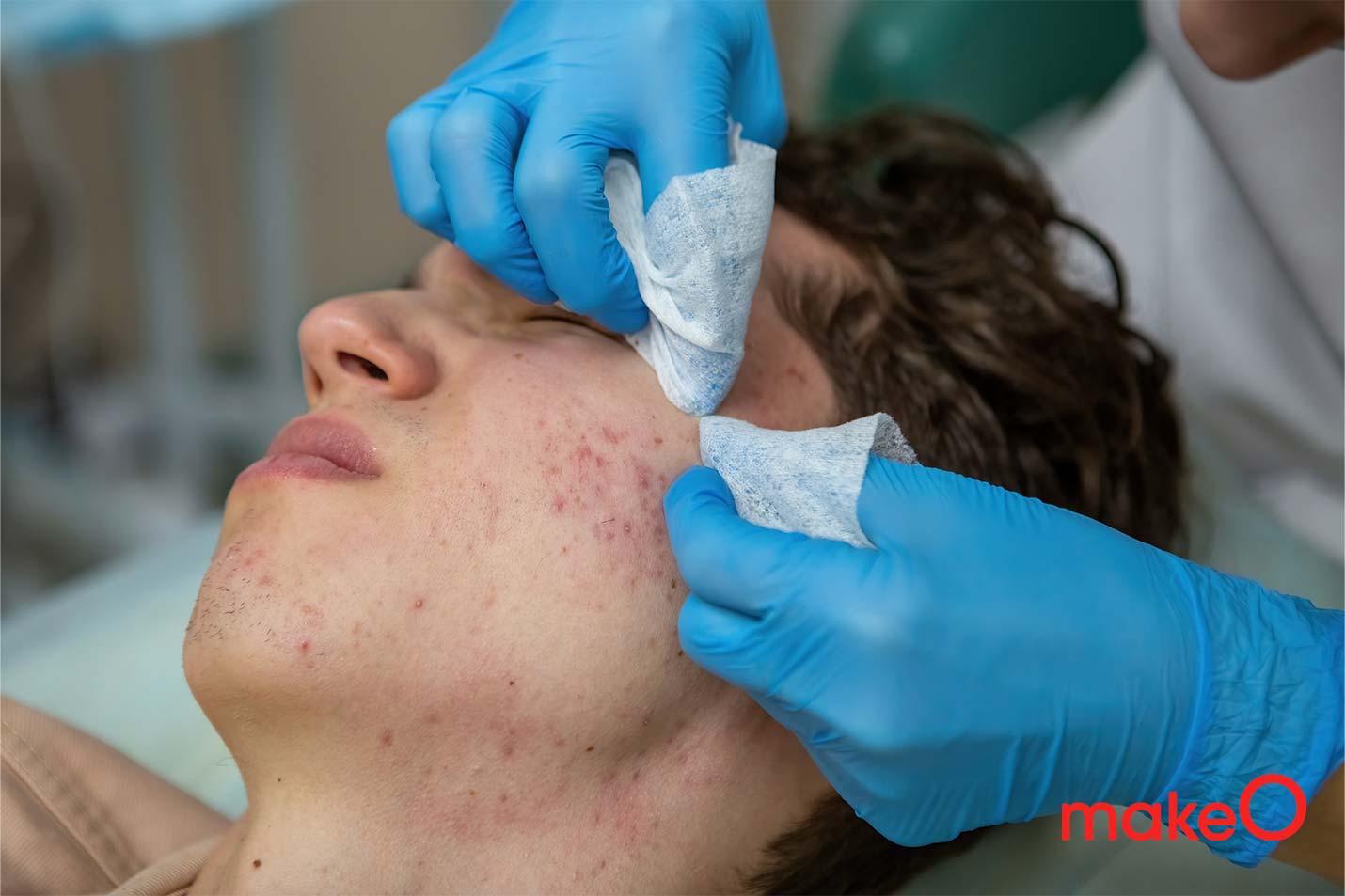MakeO blog
Melasma is a common skin condition that affects millions of people. It is a condition where brown or grey-brown patches appear on the face. Indians have darker skin tones naturally which makes them more vulnerable to the skin condition. To eradicate this condition from its root causes, it’s important to understand its triggers along with the melasma treatment options.
In this blog, we have compiled all there is to know about Melasma and its treatment options. Read till the end to find out innovative and futuristic ways to enhance the overall quality of your skin.
What is Melasma?
Melasma is a skin pigmentation disorder identified by the appearance of brown or grey-brown patches on the face. These spots primarily occur on the cheeks, forehead, nose, chin and upper lip.
How is it caused?
Melanocytes are the skin cells that are responsible for producing melanin (the pigment that gives colour to the skin). When melanocytes become hyperactive, they overproduce melanin, resulting in skin conditions like Melasma. Melasma does not cause serious harm to a person’s overall health but it can take a toll on a person’s emotions and self-confidence.
How to Know if You Have Melasma: Symptoms
The primary symptom of Melasma is the appearance of brown or grey-brown patches on the face. These patches are usually symmetrical and have irregular borders. Other symptoms may include:
- Darkening of the skin in sun-exposed areas
- Increased pigmentation on the cheeks, forehead, nose, chin and upper lip
- Gradual appearance and progression of the pigmentation on skin.
Types of Melasma
Melasma is classified into three types based on the depth of pigmentation:
1. Epidermal Melasma
When melasma affects only the outermost layer of the skin, called the epidermal layer, it is classified as Epidermal Melasma. It is characterised by dark brown patches with well-defined borders. This type of melasma is easily curable.
2. Dermal Melasma
This type affects the deeper layer of the skin (dermis) and is characterised by light brown or blue-grey patches with ill-defined borders. Dermal Melasma is comparatively more challenging to treat.
3. Mixed Melasma
This type is a combination of both epidermal and dermal Melasma. It presents itself as a mix of dark brown and blue-grey patches. The course of treatment may vary depending on the intensity of pigmentation.
Common Causes of Melasma
The exact cause of Melasma is unknown, but several factors can trigger or worsen the condition, including:
1. Sun exposure
Not just sunburn, even prolonged sun exposure can trigger overproduction of melanin into the skin, leading to melasma patches. Ultraviolet (UV) rays from the sun can stimulate melanocytes to produce more melanin, leading to Melasma.
2. Hormonal changes
Pregnant women often experience Melasma due to hormonal fluctuations, commonly referred to as the "mask of pregnancy.” During pregnancy, women experience a surge of oestrogen and progesterone in their bodies which can trigger melasma.
3. Genetics
Melasma can run in families, suggesting a genetic predisposition to the condition. Understanding your family history can help you be extra vigilant about sun protection and discuss preventive measures with your doctor.
4. Skin irritation
Aggressive skin treatments or using harsh products can cause skin inflammation and worsen Melasma. Harsh scrubbing, chemical peels or certain skincare products can irritate your skin, disrupting its natural barrier and triggering the skin condition.
Treatment Options for Melasma
Several melasma treatment options are available including:
1. Chemical peels
These involve applying a chemical solution to the skin to exfoliate the top layer of the skin, reducing pigmentation. Chemical peels can reduce surface pigmentation and stimulate collagen production. However, it is important to use sun protection after the treatment to prevent rebound darkening.
2. Dermabrasion and Microdermabrasion
Dermabrasion and Microdermabrasion mechanically remove the top layer of skin, aiming to fade Melasma patches. Dermabrasion is more intensive, while microdermabrasion is gentler.
3. Topical treatments
In some cases, healthcare professionals might recommend medical treatment for melasma. Your doctor might suggest prescription creams with ingredients like hydroquinone, tretinoin or corticosteroids, which are known to lighten melasma.
Get Glowing Skin with makeO skinnsi
makeO skinnsi offers a wide range of facials and skin treatments, including Hydra-facial, Derma Facial, and Scar Reduction to help you achieve healthy, glowing skin. Glow Facial by makeO skinnsi is curated to reduce tanning and dark spots, remove dead skin, cleanse the pores and smoothen the skin.
The advanced facials and skin treatments offered at makeO skinnsi are carefully developed under the expert supervision of dermatologists. You can avail of these services from the comfort of your home and take advantage of our tailored skin treatments, curated for your unique skin type and needs.
In short, by understanding the causes, types and treatment options of melasma, you can make an informed decision for yourself. From chemical peels to dermabrasion and topical treatments, there are several ways to manage this skin condition.
FAQs
What is the meaning of Melasma?
Melasma is a skin pigmentation disorder characterised by brown or grey-brown patches on the face due to the overproduction of melanin by melanocytes.
What are the most effective Melasma treatments?
Treatment options like chemical peels, dermabrasion, microdermabrasion and topical treatments have shown success in reducing the appearance of Melasma.
Is there a medical treatment for Melasma?
Yes, medical treatments for Melasma include prescription creams containing hydroquinone, tretinoin or corticosteroids, which can help lighten the pigmentation.
What is Melasma therapy?
Melasma therapy refers to the various treatments and procedures used to manage and reduce the appearance of Melasma.
Can skincare facials reduce the risk of Melasma?
While skincare facials may not directly prevent melasma, they can surely help you improve your skin quality. You can try out makeO skinnsi services like anti-ageing treatment, scar reduction treatment, hydrafacial and derma facial among many others to give your skin the love and care it needs.
related categories
Related articles

Anti-Ageing Face Oils: Unveiling the 10 Best Facial Oils for Youthful Skin

Is Aloe vera effective for acne? Find out

5 Common Mistakes to Avoid When Using a Face Roller

5 Side Effects of Hair Removal Creams That You Must Know

